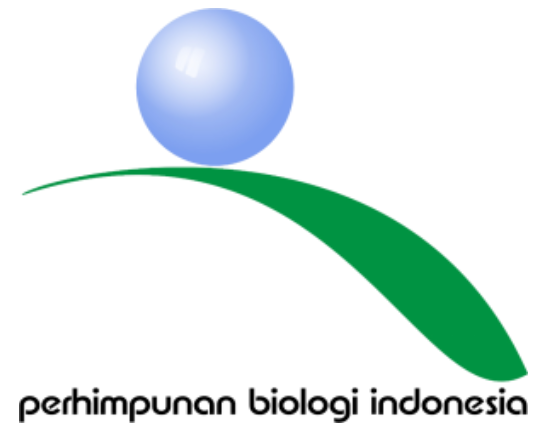The Effect of BAP and NAA Combination on Callus Induction of Aglaonema Siam Aurora Leaf Explants in Vitro
DOI:
https://doi.org/10.21831/ijobi.v1i2.213Keywords:
BAA, NAA, Aglaonema siam Aurora, CallusAbstract
This research aims to determine the effect of the Naphthalene Acetic Acid and Benzyl Amino Purine combination on callus growth of Aglaonema Siam Aurora leaf explants and to determine the combination level at the most optimal concentration on the callus growth of Aglaonema Siam Aurora leaf explants. Observation variables included callus emergence time, explants percentage of formed callus, callus length, and explant life percentage. The explants that where used were the first young leaves explants from shoots that were opened, with 2x2 cut size. Results show that the addition of a NAA and BAP combination had an effect on . Combination of 1.2 ppm BAP + 1 ppm NAA treatment is the most optimum treatment for callus growth with a callus percentage of 87.5%, the callus start time at week 3, the average callus length is 0.77 mm and the percentage number of survived explants is 100%
Downloads
References
George, E. F., Hall, M. A., & De Klerk, G. J. (Eds.). (2007). Plant propagation by tissue culture: volume 1. the background (Vol. 1). Springer Science & Business Media.
Gunawan, L.W. (1998). Orchid cultivation. Jakarta: Self-help Spreaders.
Hadipoentyani E, Nursalam A, Hartati SY, and Suhesti S. (2008). Assembly of Varieties for Patchouli Resistance to Bacterial Wilt Disease. Bogor: Research Institute for Medicinal and Aromatic Plants.
Hartman, H. T., Kester, D. E., & Davies Jr, F. T. (1990). Plant Propagation Principles and Practices. New Jersey: Prentice-Hall, Inc. Fifth Edition.
Hayati, K., Surya, N. Y., &; Setiari, N. (2010). Induction of Callus of Hypocotyl Alfalfa (Mediago sativa L.) in Vitro with the Addition of Benzyl Amino Purine (BAP) and a-Naphthalene Acetic Acid (NAA). Journal of Biomes: Biological Scientific Periodicals 12 (1): 6 – 12.
Hendaryono, D.P.S. and Wijayani. (1994). Tissue Culture (Introduction and Instructions for Plant Propagation Vegetative Media). Yogyakarta: Canisius Publishers.
Hutami, Sri. (2016). Use of Activated Charcoal in In Vitro Culture.Journal of Biology 8 (1).
Karjadi, A. K. &; Buchory, A. (2008). Effect of Auxins and Cytokinins on Growth and Development of Potato Meristem Tissue Granola Cultivars. J. Hort. 18(4): 380-4.
Palei, S., Rout, G. R., Das, A. K., & Dash, D. K. (2017). Callus Induction and Indirect Regeneration of Strawberry (Fragria x Ananassa) Duch. International Journal of Current Microbiology and Applied Sciences. 6 (11): 1311 – 1318.
Ragapadmi P., &; Misky A,. (2011). Effect of BAP and NAA on Callus Induction and Artemisinin Content of Artemisia annua L. Journal of Biology 10(4).
Sopa Putri Tanjung, Revandy I.M. Damanik and Lutfi Aziz Mahmud Siregar. (2017). Potential Embryogenic Callus Formation in Some Soybean Varieties (Glycine max L.)Merril) Tolerant to Hypoxic Conditions in Vitro. Journal of Agroetechnology FP USU. Vol. 5. No.3:546-558.
Tisserat, B. 1979. Propagation of Date Palm (Phoenix dactylifera L.) In Vitro. J.Exp.Bot. 30:1275-1283.
Thomy, Z. (2012). Effect of Plant Growth Regulator 2,4-D and BAP on Callus Growth of Plants Producing Gaharu (Aquilaria malaccensis Lamk.).
Proceedings of the Seminar on National Results of Biology. Medan, 11 May 2012.
Yunita R. 2009. Utilization of Somaclonal Variation and In Vitro Selection in the Assembly of Abiotic Stress Tolerant Plants. Journal of Agricultural R&D. 28(4): 142-148.
Winata, L. (1987). Tissue Culture Techniques. Bogor: PAU. 252 pp
Downloads
Published
Issue
Section
License
Copyright (c) 2023 Indonesian Journal of Bioscience (IJOBI)

This work is licensed under a Creative Commons Attribution-NonCommercial-ShareAlike 4.0 International License.




















